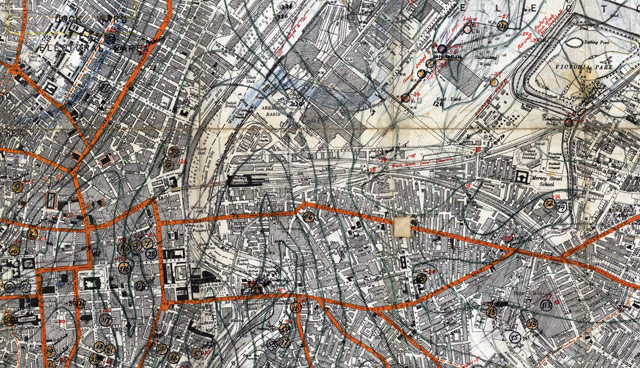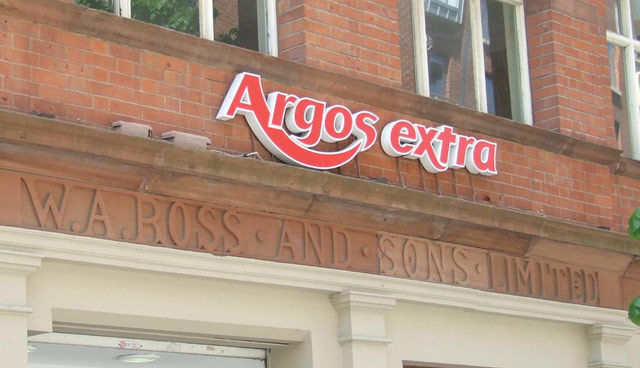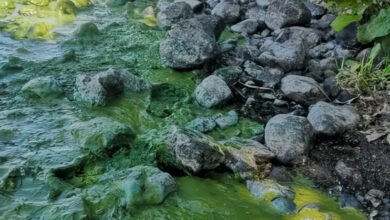Re-examining a major resource beneath Northern Ireland


Northern Ireland has an abundance of groundwater resources and unlike our neighbours, we use hardly any of it. Groundwater Engineer, Paul Wilson from the Geological Survey of Northern Ireland (GSNI) explains that this was not always the case, and how groundwater resources have played a critical role in shaping the Northern Ireland that we know today.
The growth of Belfast in the late 19th century and early 20th century was partly due to the sandstone groundwater aquifer underneath the Lagan Valley. Engineering advances enabled small diameter holes to be drilled to increasingly greater depths. This made it possible to reach the sandstone, which had been identified by geologists in the 19th century to contain large volumes of water, and use pumps to abstract the water stored within the rock.
This rock has a unique set of characteristics which, unlike most other rocks found across the island of Ireland, enable it to absorb large volumes of water in the microscopic voids in between the grains of sand that comprise it. This water would have fallen as rain on the surface and slowly flowed through the ground until it reached the aquifer. The sandstone stores over 20 times as much water as is contained in the Silent Valley reservoir. The entrepreneurs of the 19th century recognised the potential that groundwater resources presented and set about harnessing it.
The two main uses of the groundwater were for driving steam engines to generate electricity and in the aerated (soda) water trade. Factories were built all over Belfast because they could drill a borehole anywhere and abstract the groundwater to drive the steam engines. These factories made many of the support products for the larger industries such as ship building, including rope and engineering works.
The unique chemistry of the millennia-old groundwater abstracted from the sandstone made it capable of absorbing carbon dioxide to a high degree. This led to the growth of an Aerated Water Trade from 1880 onwards. Companies such as W.A. Ross and Sons and Cantrell and Cochrane (C&C) sank boreholes and built bottling plants right in the centre of Belfast. If you stand at Corn Market today, you can still see one of these buildings. Just before the outbreak of the First World War, Belfast was the largest exporter of carbonated drinks in the world.
During the war, this industry was deemed to be unessential and shut down, never to fully recover again. The introduction of mains electricity from the 1930’s to the 1950’s led to reduced reliance on steam power and with that, the decline of abstraction of groundwater resources. At its peak in the early 1930’s, an estimated 33 million litres of groundwater were being abstracted each day from the sandstone. This map shows the distribution of groundwater abstraction points across Belfast in the 1930’s and was produced by John Jerome Hartley of the Queen’s University of Belfast. Hartley had a keen interest in the hydrogeology of the Belfast area. He detailed the locations of boreholes and recorded depths to groundwater to determine the directions that groundwater was flowing.

This decline allowed groundwater resources to fully recover and was to be public water supply’s gain. Following the inception of the Geological Survey of Northern Ireland in 1947, the geologists began to become increasingly aware of the tremendous reserves of groundwater available across the Northern Ireland. They started to advocate for the development of groundwater supplies to the Rural and Urban District Councils who at that time were responsible for public water provision. By 1964, groundwater sources were supplying nine million litres per day to the public water supply. The first groundwater engineer was employed by the survey in 1968 just prior to the establishment of a single Water Service in 1973 to assist in efforts to use groundwater for public water supply across the province. Major groundwater projects were carried out on many aquifers from the Derg Valley in the west, the Faughan Valley in the north and the Main Valley in the east. At its peak in the late 80’s and 90’s, 77 million litres of groundwater were abstracted to augment the public supply daily, making up 11 per cent of total demand, with excess capacity still available. It was estimated that private industry abstracted 25 million litres per day at that same time.
An asset strategy decision by Northern Ireland Water in the late 2000’s saw almost all groundwater abstractions, along with many other surface water sources, being taken out of service. The only public water supply groundwater source that remains in operation is on Rathlin Island. In a sense, the tides turned once more. Public water supply’s loss became private industry’s opportunity. In 2008, Coca-Cola HBC Ireland ™ consolidated its bottling operations across the island of Ireland to a new purpose-built plant on the outskirts of Lisburn. They did this on the recommendations of a study which found that the ability to abstract high quality reliable groundwater from the underlying sandstone aquifer would generate significant medium to long term savings for the company. It also increased the resilience of the business in the face of future uncertainties.

With an estimated three million mega litres of high quality sustainable groundwater resource available every year, the same entrepreneurial spirit that led to the rapid growth of Belfast could utilise groundwater supplies once more. Globally and across Europe, there is growing uncertainty over climate change and the sustainability of water resources for both public supply and private industry. Northern Ireland is uniquely placed, having a surplus of groundwater resources that are unlikely to be impacted as negatively by climate change as other climate zones. Importantly, Northern Ireland also has a robust regulatory system, due to the enactment of the EU Water Framework Directive, for ensuring that this valuable resource is not overused or contaminated.
“The Sherwood Sandstone underneath the Lagan Valley stores over 20 times the volume of water contained in the Silent Valley reservoir.”
Appreciating that interest in such a high value resource is likely to increase, the GSNI is developing an enhanced work programme of groundwater monitoring and research. This is being achieved by using the latest science and technology to improve our collective understanding and awareness of groundwater resources. Central to this is working in partnership with groundwater stakeholders. This is why GSNI has established a new Northern Ireland Groundwater Resources Working Group bringing together stakeholders from across government and academia who play key roles in informing the future of groundwater resource development in Northern Ireland. It aims to proactively identify challenges to the effective sustainable development of groundwater resources and propose how these may be addressed before they become problems that require a reactive response.
There is still much to learn about groundwater processes so that groundwater resources may be used effectively and efficiently. Regulatory systems also rely on a robust understanding of groundwater processes to enable informed decisions to be made to achieve the balance of protecting the environment, meeting social responsibilities, conforming to good governance and sustaining the future society that we want to live in.
Paul Wilson, Geological Survey of Northern Ireland, Dundonald House, Upper Newtownards Road, Belfast, BT4 3SB T: 028 9038 8462
W: www.economy-ni.gov.uk
E: gsni@economy-ni.gov.uk
Twitter: @GeoSurveyNI
![]()





